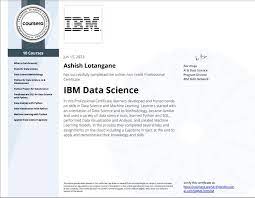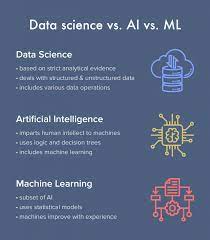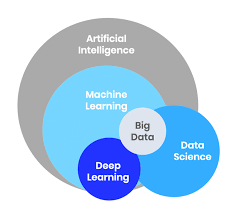IBM Python for Data Science: Empowering the Future of Analytics
In today’s data-driven world, the ability to analyse and interpret vast amounts of information is crucial for businesses and researchers alike. IBM, a leader in technology and innovation, offers a robust suite of tools and resources for data science, with Python being at the forefront. This article explores how IBM leverages Python to empower data scientists and analysts in their quest for insightful data analysis.
The Power of Python in Data Science
Python has become one of the most popular programming languages for data science due to its simplicity, versatility, and extensive library support. Its ease of learning makes it accessible to beginners while its powerful capabilities cater to advanced users. With libraries such as NumPy, pandas, Matplotlib, and SciPy, Python provides comprehensive tools for data manipulation, visualisation, and statistical analysis.
IBM’s Commitment to Data Science
IBM has long been at the forefront of technological advancements. Recognising the potential of data science in transforming industries, IBM offers a range of solutions designed to facilitate seamless data analysis processes. Their commitment extends beyond software tools; it includes educational resources aimed at building skills in this critical field.
IBM Watson Studio: A Comprehensive Platform
One of IBM’s flagship offerings is Watson Studio, a cloud-based platform that enables data scientists to collaborate on projects efficiently. Watson Studio supports multiple programming languages including Python, allowing users to leverage its extensive libraries within an integrated environment. The platform provides tools for machine learning model development, deployment, and management—all essential components for effective data science workflows.
Python Courses by IBM
To further support the growing community of aspiring data scientists, IBM offers various courses focused on Python programming specifically tailored for data science applications. These courses cover fundamental concepts such as data wrangling with pandas or creating visualisations using Matplotlib—skills that are indispensable when working with real-world datasets.
The Role of AI in Enhancing Data Science
Artificial Intelligence (AI) plays an increasingly significant role within the realm of modern-day analytics. By integrating AI technologies into their offerings like Watson Studio AutoAI module—an automated machine learning tool—IBM empowers users by streamlining complex tasks involved in model building while maintaining high accuracy levels throughout each stage from preprocessing through deployment phases seamlessly integrated within existing workflows powered by trusted open-source frameworks including TensorFlow PyTorch among others widely adopted across industry sectors globally today!
A Bright Future Ahead
The synergy between IBM’s innovative solutions combined with Python’s flexibility positions both entities perfectly poised towards driving future advancements across diverse domains ranging from healthcare finance retail manufacturing more! As organisations continue embracing digital transformation initiatives harnessing power analytics unlock hidden insights previously inaccessible traditional methods alone now possible leveraging cutting-edge technologies offered leading providers like never before seen history mankind exciting times indeed await us all ahead journey unfolds new possibilities emerge horizon every day anew pushing boundaries further than ever imagined possible until now limitless potential awaits those daring enough embark upon path discovery exploration together forge brighter tomorrow today!
Top 6 Advantages of Using IBM Python for Data Science: From Comprehensive Libraries to Versatile AI Capabilities
- 1. Comprehensive Libraries
- 2. Integration with Watson Studio
- 3. Educational Resources
- 4. AI Capabilities
- 5. Industry-Leading Support
- 6. Versatility and Flexibility
Challenges of Using IBM Python for Data Science: Key Drawbacks to Consider
- 1. Learning Curve
- 2. Resource Intensive
- 3. Limited Visualisation Capabilities
- 4. Dependency Management
- 5. Performance Issues
- 6. Lack of Official Support
- 7. Security Concerns
1. Comprehensive Libraries
IBM Python for data science offers a significant advantage through its comprehensive libraries, including NumPy, pandas, and Matplotlib. These powerful tools enable data scientists to perform efficient data manipulation and analysis with ease. NumPy provides support for mathematical functions and operations on large arrays and matrices, while pandas offers versatile data structures for handling structured data effectively. Additionally, Matplotlib facilitates the creation of high-quality visualisations to aid in interpreting and communicating insights derived from the data. By leveraging these libraries, IBM Python equips users with the necessary resources to conduct in-depth analysis and derive valuable insights from complex datasets efficiently.
2. Integration with Watson Studio
One of the key advantages of using IBM Python for data science is its seamless integration with Watson Studio. This integration enables data scientists to work collaboratively on projects within a cloud-based environment. By leveraging the capabilities of Watson Studio alongside Python’s powerful data analysis tools, teams can streamline their workflows, share insights in real-time, and enhance productivity through efficient collaboration. This integrated approach not only facilitates smoother project management but also ensures that data science projects can be executed with precision and agility, ultimately leading to more impactful outcomes in the field of analytics.
3. Educational Resources
One notable advantage of using IBM Python for data science is the array of educational resources provided by IBM. Through tailored courses focused on Python programming specifically for data science applications, users can improve their skills and knowledge while keeping abreast of the latest industry trends. These educational offerings empower individuals to deepen their understanding of Python’s capabilities in data analysis and leverage its full potential in driving insights and innovation within their respective fields.
4. AI Capabilities
The integration of AI technologies within IBM Python tools significantly enhances the efficiency and effectiveness of tasks such as machine learning model development and deployment. By incorporating advanced AI capabilities, IBM enables data scientists to streamline complex processes, reducing the time and effort required to build, train, and deploy models. This seamless integration allows for automated optimisation of algorithms and improved accuracy in predictive analytics. Consequently, data professionals can focus more on deriving insights and strategic decision-making while relying on IBM’s robust AI-driven tools to handle the intricacies of machine learning workflows efficiently.
5. Industry-Leading Support
With IBM’s Python for data science, users benefit from industry-leading support that is synonymous with the company’s status as a technology pioneer. This means that users can rely on robust and dependable assistance whenever needed, ensuring smooth operations and troubleshooting of any issues that may arise. Additionally, IBM’s commitment to providing continuous updates to their Python data science tools guarantees that users have access to the latest features and improvements, enhancing their overall data analysis experience and keeping them at the forefront of technological advancements in the field.
6. Versatility and Flexibility
The versatility and flexibility of Python, when coupled with IBM’s resources, provide users with a powerful tool to address a wide range of data science challenges efficiently. Python’s adaptability allows data scientists to work on diverse projects with varying requirements, from data manipulation and analysis to machine learning model development. With IBM’s support and comprehensive suite of tools, users have the flexibility to tailor their approaches according to the specific needs of each project, ensuring effective solutions for even the most complex data science tasks.
1. Learning Curve
One significant drawback of using IBM Python for data science is the steep learning curve it presents, particularly for individuals new to programming. Navigating the complexities of Python, along with understanding fundamental programming concepts, can be challenging for beginners entering the field of data science. This hurdle may deter some aspiring data scientists from fully utilising the powerful capabilities of Python and IBM’s tools, potentially slowing down their progress in acquiring the necessary skills to excel in data analysis and interpretation.
2. Resource Intensive
Running complex data analysis tasks in Python using IBM’s tools for data science can be resource-intensive, posing a challenge for users with limited computational capabilities. The demand for processing power and memory to handle intricate algorithms and large datasets may strain the resources of some systems, potentially leading to longer processing times or even system slowdowns. This limitation highlights the importance of considering the hardware requirements and scalability of the infrastructure when utilising Python for data analysis within IBM’s ecosystem.
3. Limited Visualisation Capabilities
One drawback of using IBM Python for data science is its limited visualisation capabilities. Although Python libraries such as Matplotlib provide robust tools for creating visual representations of data, developing advanced and interactive visualisations can be challenging and time-consuming, often demanding a higher level of expertise. This limitation may hinder data scientists in effectively conveying complex insights and trends from their analyses, potentially slowing down the overall data exploration and interpretation process.
4. Dependency Management
One significant drawback of using IBM Python for data science is the challenge of dependency management. Handling dependencies and ensuring compatibility with different library versions in Python projects can be a complex and time-consuming task. This process often leads to compatibility issues and troubleshooting challenges, requiring data scientists to invest additional effort in resolving conflicts and maintaining a stable working environment. As a result, the intricacies of dependency management can introduce delays in project timelines and hinder the seamless progression of data analysis tasks.
5. Performance Issues
One significant drawback of using IBM Python for data science is the issue of performance. Python, being an interpreted language, may exhibit slower execution speeds when handling extensive datasets compared to compiled languages such as C++ or Java. This difference in performance can be particularly noticeable in tasks that require heavy computational processing, potentially leading to delays in data analysis and modelling processes. As a result, users may experience challenges in achieving optimal efficiency when working with substantial amounts of data within the Python environment provided by IBM.
6. Lack of Official Support
One significant drawback of using IBM Python for data science is the lack of official support. Unlike commercial software solutions, Python being an open-source language does not offer dedicated support channels from a single entity. This absence of direct assistance can result in heavy reliance on community forums for troubleshooting and guidance. While the Python community is vast and active, depending solely on forums for help may lead to delays in resolving critical issues or receiving expert-level support, potentially impacting the efficiency and effectiveness of data science projects relying on IBM Python.
7. Security Concerns
One significant con of utilising IBM Python for data science is the potential security risks associated with incorporating third-party libraries and packages into projects. Failure to meticulously adhere to stringent vetting and validation procedures when integrating external components can expose vulnerabilities, leaving systems susceptible to security breaches. This underscores the importance of implementing robust security measures and conducting thorough assessments to mitigate the inherent risks posed by relying on external dependencies within Python projects.






